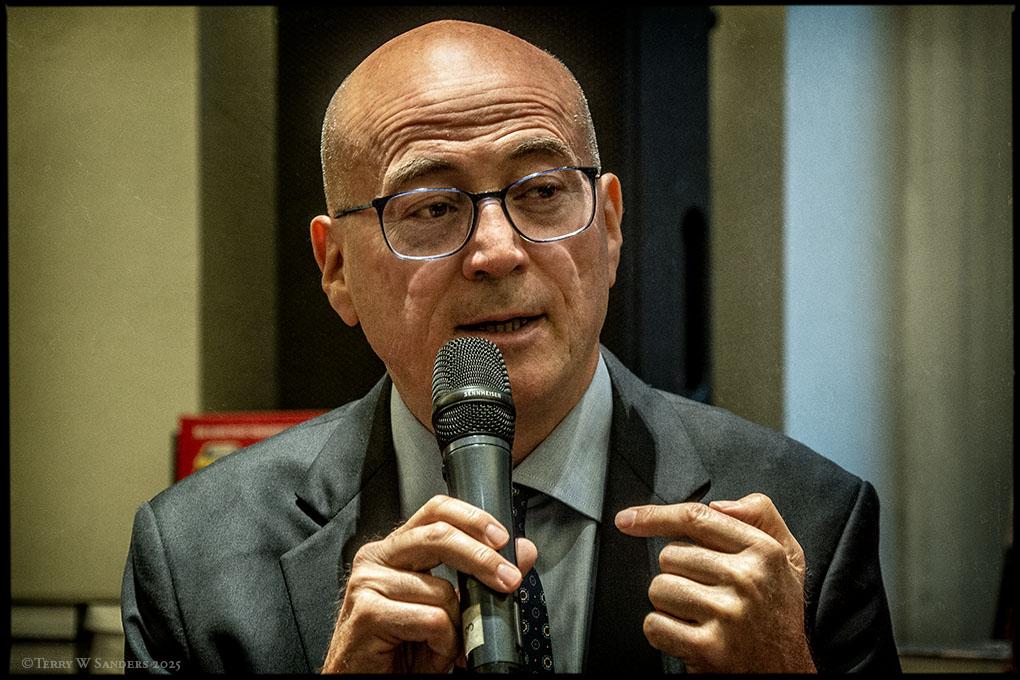The idea that Rome ever fell is one of history’s most enduring myths. According to Aldo Cazzullo, though, Rome never really vanished. It’s still everywhere. And he made that case with energy, humor, and a torrent of historical anecdotes during a talk about his book The Neverending Empire—the international edition of Quando eravamo i padroni del mondo. Roma: l’impero infinito—at the Rizzoli Bookstore in New York, in partnership with the Italian Cultural Institute.
From Augustus to Zuckerberg, by way of Caesar, Napoleon, Roosevelt, and Kennedy. These aren’t forced comparisons. They’re part of a long thread connecting different styles of leadership, ways of building consensus, and strategies for managing faraway lands. “Rome left us more than ruins,” Cazzullo said. “It left us ideas. And ideas, if they’re solid, don’t die.” The list is long: liberty, justice, propaganda, treaties, suffrage, honor. And of course, res publica. “The idea that the state belongs to everyone, that public affairs are a shared responsibility, was born in Rome. Even the first real democracy was Roman, with consuls elected by the people, laws voted on, wars debated in assembly.”
Cazzullo is direct: the United States took that model and adopted it from the very beginning. The name “Capitol Hill” isn’t just poetic—it’s a political statement. Madison and Hamilton signed foundational texts for the U.S. Constitution under the name “Publius,” one of Rome’s early consuls. And when Kennedy stood in Berlin in 1963 and said, “Ich bin ein Berliner,” he was echoing the old Roman pride of citizenship: Civis Romanus sum.
During his remarks at the Rizzoli event, Cazzullo reflected on the symbolic and cultural power of the Roman Empire. Rome didn’t just project authority. It structured it, narrated it, spread it through words and imagery. It’s no coincidence that English now plays the same role Latin once did: it’s the language of diplomacy, politics, global markets, science, and the internet. But empires also have edges—colonies, peripheries, provinces. Just like in ancient Rome, today’s America still has its outposts. Guam, Puerto Rico, the Virgin Islands. Populations who are U.S. citizens but can’t vote in presidential elections. They live in what could be called an “imperial gray zone”: close enough to be governed, not close enough to have real influence.
Guam, for example, is now a key piece in the U.S.–China strategic puzzle. One-third of the island is controlled by the U.S. military. Entire sections of forest are being cleared to make room for bases, weapons testing grounds, and military infrastructure. Environmental groups warn of the destruction of rare ecosystems. Indigenous communities accuse Washington of erasing ancestral lands and cultures. Meanwhile, the Pentagon decides where the missiles go—with minimal local input.
Rome did the same. It handed out citizenship based on strategy, built roads to move legions, brought in local elites while spreading its own cultural norms. The empire also ran on propaganda, power rhetoric, and a shared narrative. It’s what still happens now, just with different tools.
Cazzullo doesn’t moralize. He doesn’t say it’s all wrong. What he does say is that we should face the structure of the world we live in and recognize its deep architecture. Rome isn’t a neutral symbol—it’s a framework that still shapes our institutions, ambitions, and conflicts. When Roosevelt liberated Rome in 1944 he said Italy wasn’t the enemy—fascism was. Italy, he said, is Dante, Galileo, Michelangelo. But Italy was—and still is—Rome. And Rome, for better or worse, is still the mirror the West looks into.
Those who now control images, words, data, and the rules of the global game are filling that same space. You don’t have to call yourself emperor anymore—you just have to act like one. In the end, the modern world is the one Rome laid the groundwork for. Maybe we shouldn’t talk about the fall of the Empire, but about its transformation.












